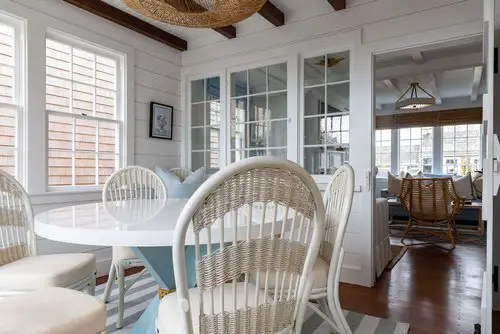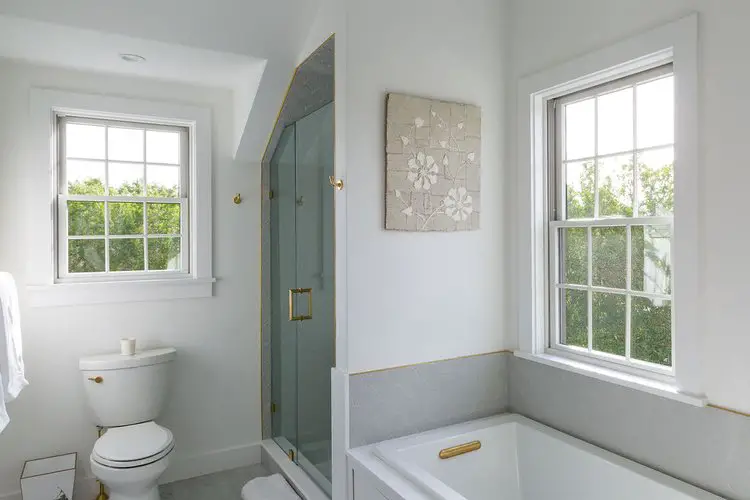While determining the exact number of offices and homes with glass partitioning systems installed is challenging, recent statistics from the global glass wall market provide some insight.
Between 2022 and 2028, the market in question could be growing at a CAGR of 3%, reaching a whopping $5.25 billion by the end of the specified period.
Similarly to other verticals, businesses that specialize in glass walls are impacted by emerging market trends. These trends include a growing focus on eco-friendly manufacturing and the increasing use of automation.
As a result, customers are getting even more durable and functional products that bring style, light, and effective use of space to any home or public place.

Besides improved product quality and robust design variations, there are other factors boosting the demand for glass dividers. Such factors include the increasing prices of residential and commercial real estate, the emergence of the sharing economy, and the prevalence of minimalist design in modern interiors.
Today, we’ll focus on one specific use case for glass walls — i.e., maximizing available space with glass dividers.
5 Ways to Maximize Space with Glass Partitions
Before giving you tips for transforming your shoebox apartment or office space, here’s a brief intro to glass dividers.
In a nutshell, glass partition systems are inner walls made of glass. They can be framed in various materials such as wood and metal. The glass can be frosted, transparent, or tinted, and may come with different functional properties, like providing heat protection and reducing noise.
When shopping for glass partition systems, you have two options:
- Buying an off-the-shelf solution, which might need heavy and costly customization to meet your specific design needs
- Ordering a custom-made solution from a reliable company that specializes in glass divider manufacturing
Going the second route is a good choice if you want a combination of unique features, like frameless tinted glass walls with sliding doors, or if your space has an unconventional layout.

Now that you’re familiar with the subject, let’s explore the top five ways to utilize spaces more effectively using glass partitioning systems:
- Replacing solid interior walls and doors with glass panels. In most properties, interior walls eat up 5-7% of the total floor area. Coupled with the so-called clearance areas that allow swinging doors to function properly, solid partitions can occupy one-tenth of all available space (and even more). To address this issue, you can remove non-load-bearing walls and replace them with stylish glass walls, either with or without frames. Incorporating sliding doors into the partitioning system design could help maximize the space-saving effect.
- Breaking large spaces into smaller areas. In 2023, the US house prices have grown 3.9% on a year-over-year basis. 90% of companies, meanwhile, share plans to ditch work-from-home policies by the end of 2024. Considering the ongoing economic decline and layoffs, it is evident that both businesses and individuals will start looking for more affordable and smaller real estate options in the near future. With lightweight glass dividers, you can make the most of the limited space you have while creating a sense of order and privacy.
- Leveraging glass walls for interior zoning. Going back to the limited living and working space challenge, you can use glass panels to create well-defined areas in your properties. To enhance the effect, you can augment glass walls with unique floor design patterns. The use of such elements in interior design helps maintain an open and airy feel while effectively dividing spaces into zones.
- Creating an illusion of space by enhancing natural light flow. Glass walls do not block the flow of natural light, which helps you visually enlarge your space and minimize energy spending. Additionally, you can amplify the effect by using different types of glass and adding additional design elements. More details on this will be provided in the next section.
- Combining glass walls with decorative elements. Complementary design elements like curtains, mirrors, and blinds allow you to better manage lighting while maintaining a sense of privacy and avoiding visual clutter. To ensure consistency in style, it is advisable to consult an interior designer before ordering glass panels. Also, you should discuss your design requirements with the glass wall company you have selected.
In summary, including glass partitions in your design will help you create a living or working space that feels spacious, open, and more expansive.
How to Make Glass Dividers an Integral Part of Your Interior Design

- Compose a list of requirements. To revamp your space with glass walls, you’ll first need to take precise measurements of the property. Next, consider how you’re going to use the space, how much privacy you and your roommates or coworkers need, and whether your property is currently getting enough natural light.
- Catch the vibe. When browsing through the websites of glass wall companies, you may find yourself overwhelmed by the wide range of materials, design choices, and special offers. Besides figuring out the technical aspects of glass panel design, you should also consider the vibe you’re aiming to capture. Can your interior be described as classic? Are you inspired by Scandinavian designs? What framing materials will look better in your interior? These are some questions you should ask yourself in order to choose the right product.
- Explore new ideas. A dedicated manager at a glass wall company will walk you through the partition design and installation process, highlighting the types of glass you can use in your project. While it’s important to adhere to technical and interior design requirements, carefully weigh in on the manager’s advice. For instance, you may have all sorts of prejudices against opaque glass, but this could be exactly what the doctor ordered.
Maximizing space, either functionally or visually, is where glass walls excel.
However, it’s just one use case for glass panels in interior design. In our upcoming articles, we’ll delve deeper into glass partition applications and benefits, so stay tuned for more!
Thanks to crystaliaglass.com for consulting on this post.
























